Tours are given after each lecture starting at 11 AM and last for about 40 minutes. Scientific and technical staff of Fermilab will be the tour guides. After the lecture, the SMP coordinator will introduce the tour guides to the students.
Fermilab has a large variety of interesting sites in which important scientific discoveries have been made. The following is a list of sites and a brief description of them:
Wilson Hall BuildingThis is the building in which the lectures are given. It was named in honor of the first director of Fermilab, Robert Wilson. Wilson was an artist and created several sculptures that are now part of the Fermilab landscape. The tour of Wilson Hall focuses mostly on the 15th floor, from which the view is great and where different small-scale models of the site and the accelerator are located. |
|
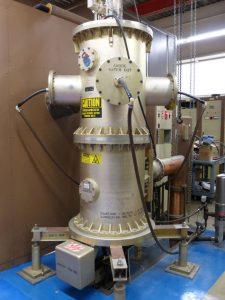 |
AcceleratorsFermilab has one of the most energetic chain of accelerators in the world. It create, accelerates and distributes protons to experiments studying the basic properties of matter, especially neutrinos. The tour will walk through the equipment level of the the first two stages of the accelerator chain, from which everything starts. The Main Control Room, from which we control all the particle beams on site, will be featured. For other interesting pictures of the accelerators at Fermilab, click here. |
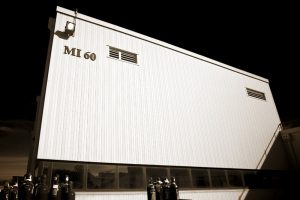 |
Booster and Main InjectorThe workhorses of Fermilab are its accelerators: Pre-Acc, Linac, Booster, Recycler and Main Injector. You saw the Pre-Acc and the Linac in a previous tour. This tour takes you into the heart of the equipment that makes these machines work. You’ll see the nitty-gritty of these devices: the electronics, the water systems and the accelerating systems. While we are not allowed to take you into the machine enclosures, we can show you this robust and reliable equipment. |
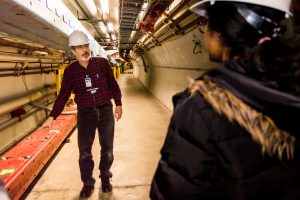 |
DØ(Pronounced dee-ZERO) is one of the two large collider particle detectors (or “cameras”) at the Tevatron. The discovery of the fundamental particle, the “top quark,” was achieved at this site and at its counterpart detector, CDF. CDF also surrounded one of the points in the Tevatron ring where protons and antiprotons collided. Having two detectors allowed scientists to check their results against each other. To see more diagrams of DØ click here. DØ exhibit website. This tour lasts longer than the others; expect to be back at Wilson Hall by 12:30 PM. |
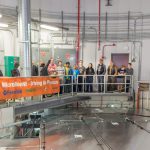 |
NeutrinoNeutrinos are the subject of most of the particle physics that is happening at Fermilab. This tour takes you to a couple of the facilities on site where scientists and engineers study these elusive particles, starting with the Remote Operations Center. |
Grid Computing Center (GCC)The Grid Computing Center holds more than 10,000 top-of-the-line computers. These computers are used to solve complicated scientific problems. Having a large number of computers allows for faster computation using the technique of parallel processing. Scientists from all over the world use this so-called computer “farm.” |
|
Magnet R&DIn the magnet fabrication facility, Technical Division builds small and large magnets for accelerators at Fermilab and elsewhere, including superconducting quadrupole magnets for the LHC at CERN. In the magnet test facility, the magnets are measured. |
|
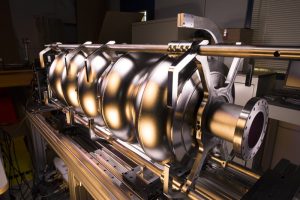 |
Superconducting RF FacilitiesIn the SRF (Superconducting Radio Frequency) cavity test facility, Technical Division conducts research to develop better accelerating cavities for future accelerators. In the Cryomodule Assembly Facility, we assemble multiple cavities into large structures for new accelerators at Fermilab and elsewhere. |
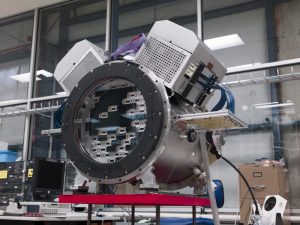 |
SiDet: Silicon Detector FacilityThe Fermilab SiDet facility is at the heart of R&D and production of a variety of detectors that are being, or will be used, by Fermilab scientists. For example, the Dark Energy Camera (left), a 500-megapixel, wide-field imager using charge-coupled devices, was built at SiDet. |
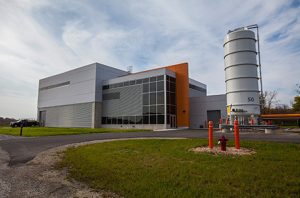 |
Muon CampusThe Fermilab Muon Campus is host to two new world-class experiments: Muon g-2 and Mu2e. Both experiments utilize muons, subatomic particles which are the heavier cousins of electrons. Muon g-2 utilizes a 50-foot-diameter magnetic racetrack which traps muons traveling at nearly the speed of light for a high-precision measurement of their magnetic properties. Mu2e will create the world’s most intense muon beam in search for a forbidden muon conversion mode. Both experiments feature state-of-the-art detector systems in a quest for the telltale signs of new particles and forces of nature. |



